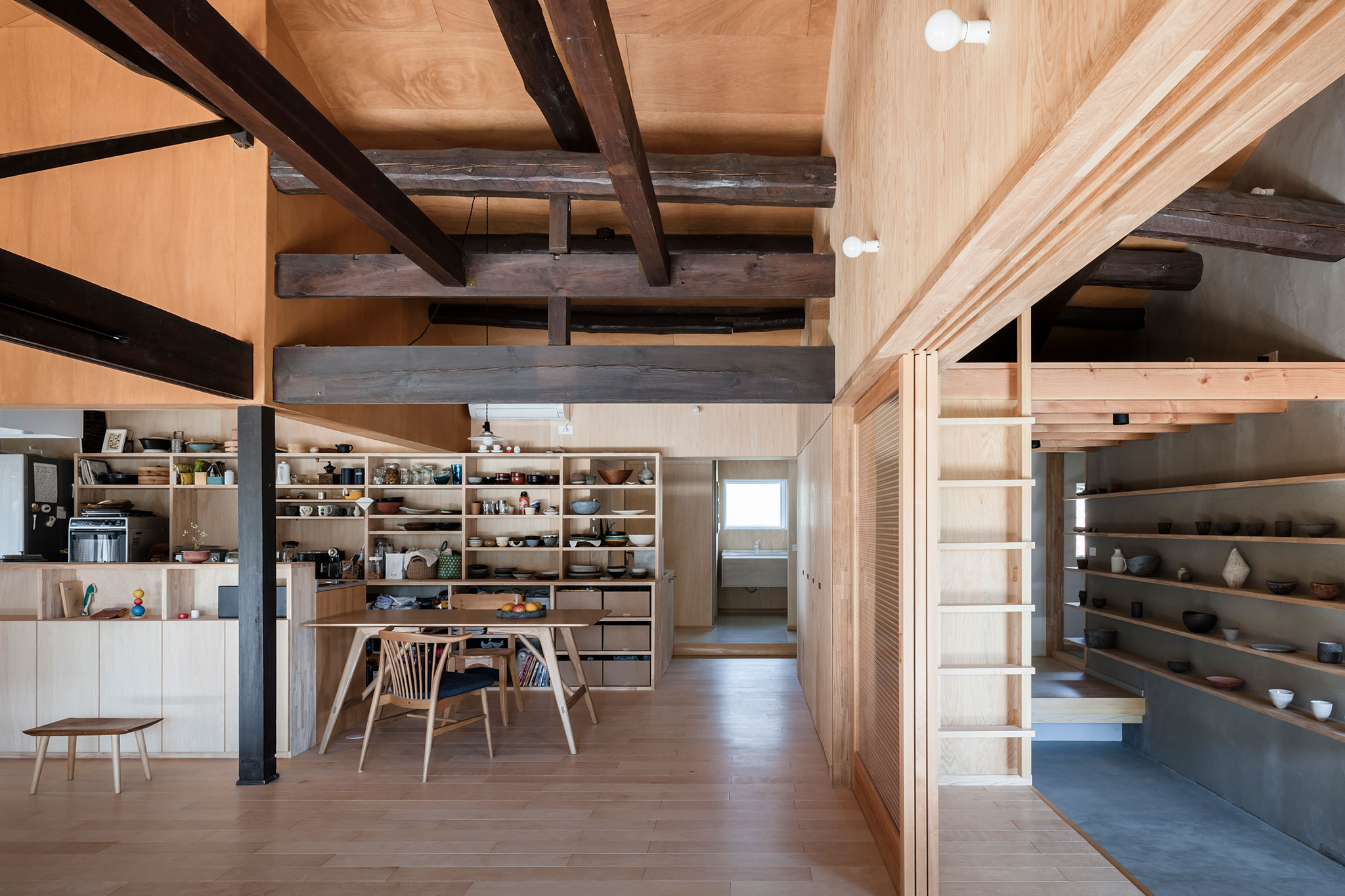
The project developed by Raumus is conceived as a home that prioritizes change and harmony, reconfiguring the house into three main spaces: a production and guest room, a day area, and a night area, but at the same time creating the opportunity to merge them based on current and future family needs.
Based on the idea of optimizing material resources and space, and the client's desire to honor and respect history and "enjoy the taste of old things," a home is created that harmonizes both the ways of living and the existing structural materials, in dark colors, while providing a modern look through furniture and coverings based on lighter shades.

Renovation of a Minka with a ceramic artist’s studio by Raumus. Photograph by Norihito Yamauchi.
Descripción del proyecto por Raumus
Living in Minka
A house for a family of four: a potter, a cook, and their young children. The client decided to purchase and renovate Minka (old Japanese-style house) with a thatched roof to live in Okayama as a new base of living.
The site is dotted with several old thatched-roof houses with metal roofing that have also been lived in until the present day.Therefore, we wanted to restore the generous atmosphere of the old private homes in the area and carry on the existence of the private house. We wanted to revive the form of the house in the modern age as a place for living that would support this family, with a floor plan that was largely modified to fit modern lifestyles.

Doma and Hall
The couple had many business visitors and lived a life of continuous daily life and work. The husband, a potter, works in his studio during the day and has to deal with visitors who come to see his work in person. His wife has many opportunities to gather people and serve meals to many people. Therefore, we decided to reconfigure the house into three spaces: the doma/tatami room for production and guests, the living space during the day, and the sleeping space. Doma(The earthen floor) and the hall are separated by three sliding doors, which can be opened to create a room of about 90㎡.The hipped ceiling, which follows the shape of the roof, is about 4 meters high at the top, making it a very large space. The house is not only a residence, but also a place of work and a gathering place for the community.
A house that allows for change
Rather than completing everything at the time of building completion, our first priority was to think about it while living in the house, and to We decided not to build a nursery for the children when they are young, but to use the existing structural materials to simply partition the rooms in the future. The husband’s atelier is also located on the site, and the earthen floor area is intended to be used as a children’s room, making the house adaptable to future lifestyle changes.

Thermal environment planning friendly to people and the environment
In this project, all the sashes were replaced with new ones, and all the walls and ceilings were filled with insulation material. The hall is 4m high at the top, so it is heated in winter by a wood-burning stove in combination with hot-water floor heating using a heat pump instead of air conditioning. The surrounding mountains made it easy to obtain firewood for the stove. The thatched roof has a high insulation effect, and the ceiling is also insulated with insulation material, so the house is comfortable in summer without air conditioning except on extremely hot days. A total heat exchanger was used to effectively ventilate the house while reducing heat loss, and a comfortable thermal environment was planned while using non-exaggerated equipment that fits the atmosphere of the old house. Because the existing columns and beams were dark in color and had a strong presence, the ceiling was finished with dark-colored lauan plywood to match the existing structural materials. The lower part of the ceiling is finished with light-colored lauan plywood to match with modern furniture.
Old and new
When renovating an old private house, we avoided contrasting or assimilating the old and new parts of the house.By adding various types of materials such as wood, mortar, and steel to the existing columns, log beams, and other time-honored elements, we aimed to create a state in which it is difficult to tell which parts are new and which parts are old.We thought it would be appropriate to harmonize these materials while coexisting with the client’s desire to “enjoy the flavor of old things” while practicing a modern way of living.










































